
On the ground floor of the National Gallery of Art in Washington, hang six exquisite paintings on the short life of St. Joan of Arc by artist Louis Maurice Boutet de Monvel. Best known as an illustrator for children’s books, Boutet de Monvel was commissioned to paint this series when his children’s picture book on the saint brought him international recognition.
St. John Paul II holds hands with St. Teresa of Kolkata after visiting Mother Teresa’s home for the destitute and dying in 1986 in India. Six years after her 1997 death, Pope John Paul II declared her “blessed,” and in 2016, she was canonized. (Luciano Mellace/CNS, via Reuters) See FAITH-ALIVE 21 April 16, 2020.
These vibrant and colorful paintings of oil and gold leaf on canvas are the perfect accompaniment as we celebrate the 100th anniversary of Joan of Arc’s canonization.
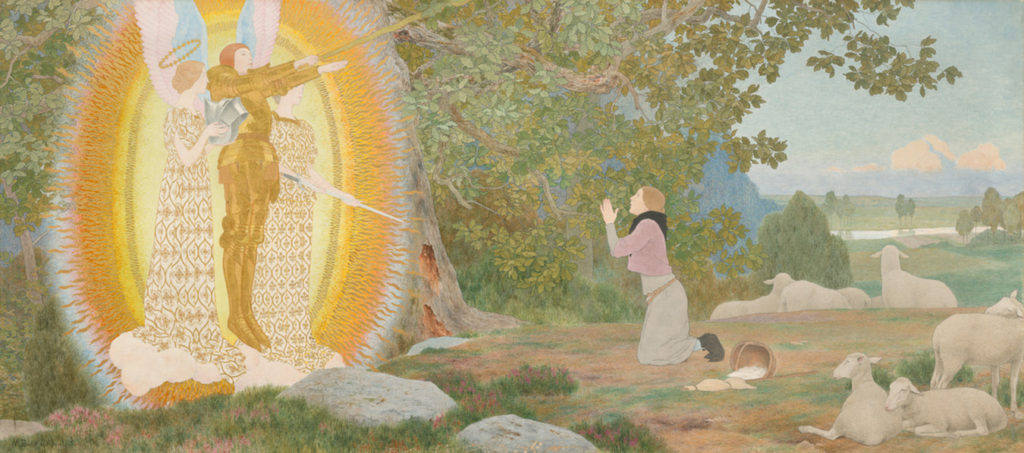
Born over 600 years ago, this young peasant girl has captured our imagination. Like Mary, the mother of Jesus, she came from humble beginnings and dared to say “yes” when she was called.
In northeastern France while tending the family sheep, 13-year-old Joan heard the voice of St. Michael the Archangel. His voice took form as a vision, and he was later joined by St. Catherine of Alexandria and St. Margaret of Antioch. They brought her a mission: save France by restoring the dauphin to his throne and driving the English enemy from French soil.
In Boutet de Monvel’s painting, a young Joan kneels beside her spilled basket of cloth. The saints are radiant in gold leaf and St. Catherine and St. Margaret wear matching dresses. Their beauty was so great, Joan wept when they left, as she described later at her trial.
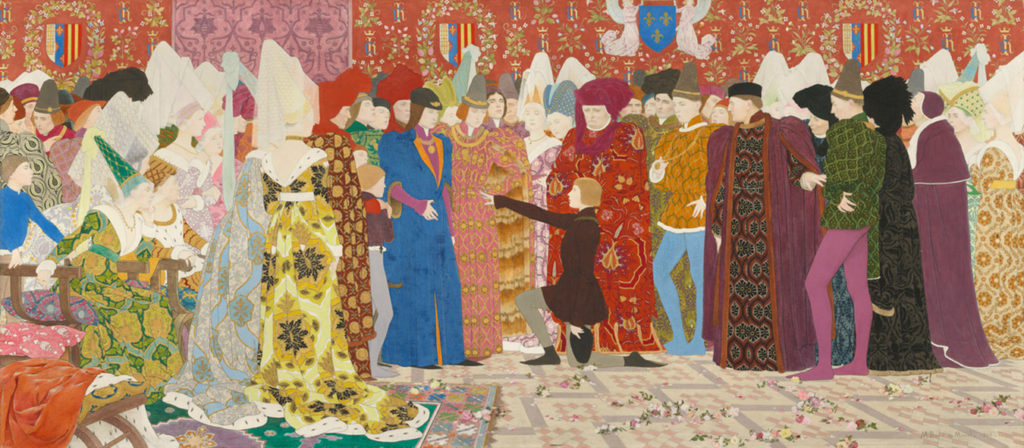
At 16, Joan convinced a relative to transport her to Vaucouleurs, where she sought permission to visit the royal court of Charles VII, the dauphin of France. She first won the confidence of the garrison commander, then his soldiers, until she eventually moved her way into the royal court, where she gained a private meeting with Charles VII and won his trust.
But his advisers did not trust her. So the dauphin ordered Joan to be put through a theological inquiry to put them at ease. She was declared “to be of irreproachable life, a good Christian, possessed of the virtues of humility, honesty and simplicity,” historian M.G.A. Vale writes in the book “Charles VII.”
In Boutet de Monvel’s second painting in this series, there is a sharp contrast between St. Joan and the royal court. Men and women wear colorful and opulent clothing in comparison to Joan’s simple brown frock.
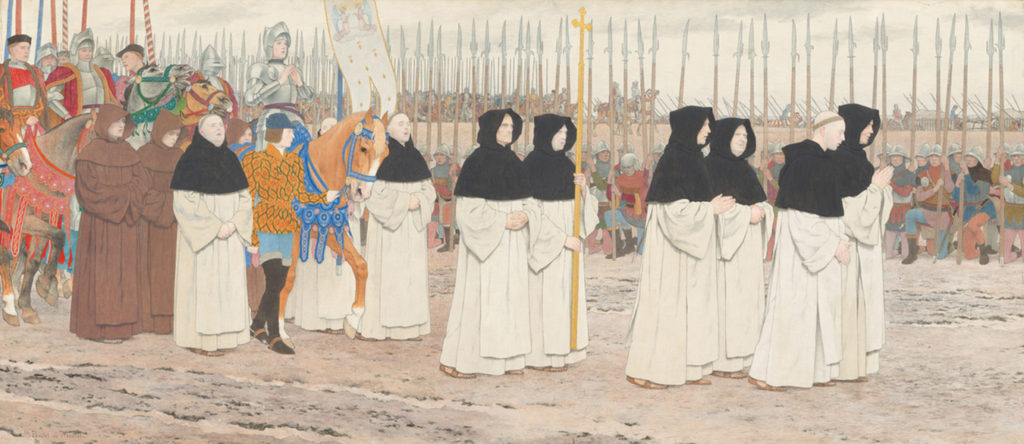
To put Joan to the test, the advisors sent her into the battle to lift the siege on Orleans. It was meant to be a death sentence as the army was weak, exhausted and without strong leadership. Joan insisted that the army was led by noblemen but many thought she was the true leader. She inspired the troops and gave advice she could only have received from heaven.
Joan did not relish the carnage of battle. To avoid using her sword, she led the army brandishing a large flag that read “Party of the Kingdom of Heaven.” Here Boutet de Monvel portrays her praying as she leads the troops to battle.
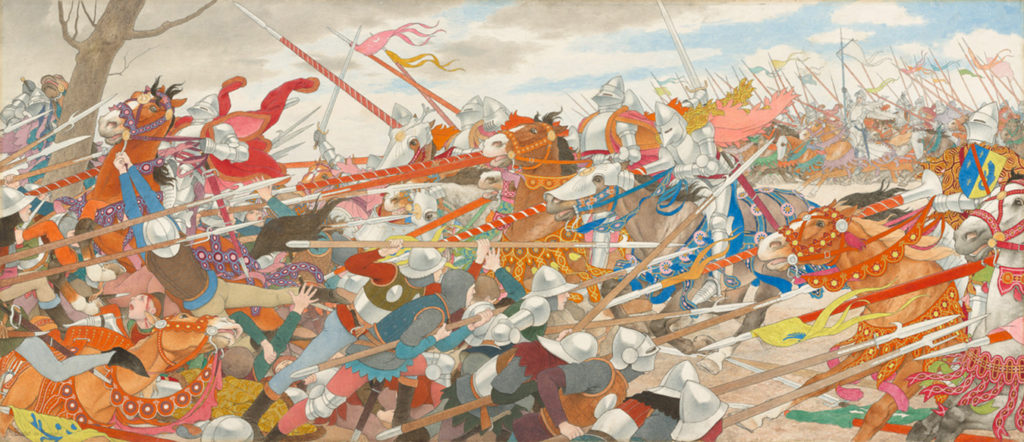
And yet, battle she did. To be more practical, Joan cut her hair and donned armor and a sword. She was said to have been resplendent in battle, the light of her God-given bravery shining through.
The tide of the war turned when French armies drove the English out of France, lifting the siege of Orleans and paving the way for the dauphin to be crowned as the king of France.
In the Boutet de Monvel panel, we see Joan kneeling behind the dauphin as if in prayer. She completed the mission she was given.
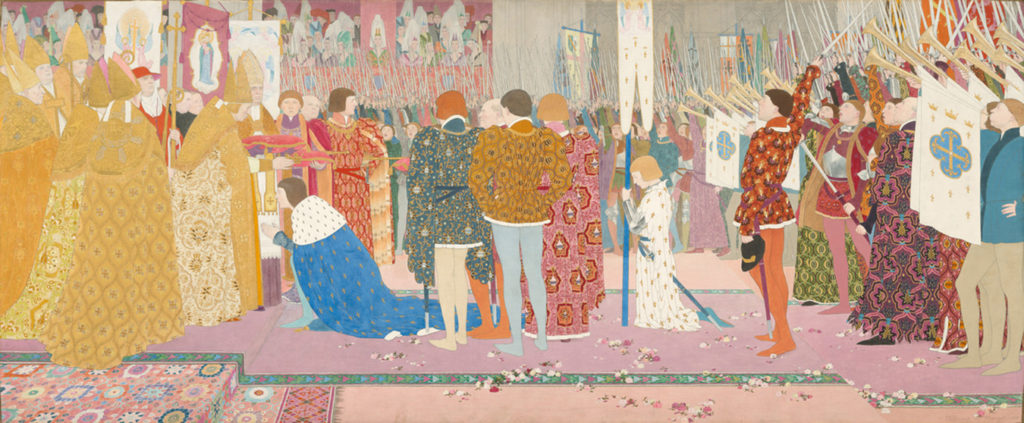
Charles VII rewarded Joan’s actions on the battlefield by ennobling her family. Yet these rewards were short lived. In the next battle, Joan was captured, sold to the English and imprisoned in a dark cell for a year. She was put on trial for her life.
The English wanted to find her guilty of heresy or witchcraft. During her interrogation, Joan answered questions with wit, a pure heart and strong faith. She refused to denounce the authority of the voices she heard.
The court also took issue with the fact that Joan continued to wear male clothing in prison. To wear military clothing in battle was one thing, but to continue to wear it in prison was another. The court charged Joan with cross-dressing.
Joan explained that since she was being held in a secular prison as opposed to an ecclesiastical one, guarded by nuns, she continued to wear the clothing to protect herself from rape.
Indeed one of the guards had attacked her, the pants of the military clothing, buttoned into the shirt, buying her time as she fought him off before other guards intervened.
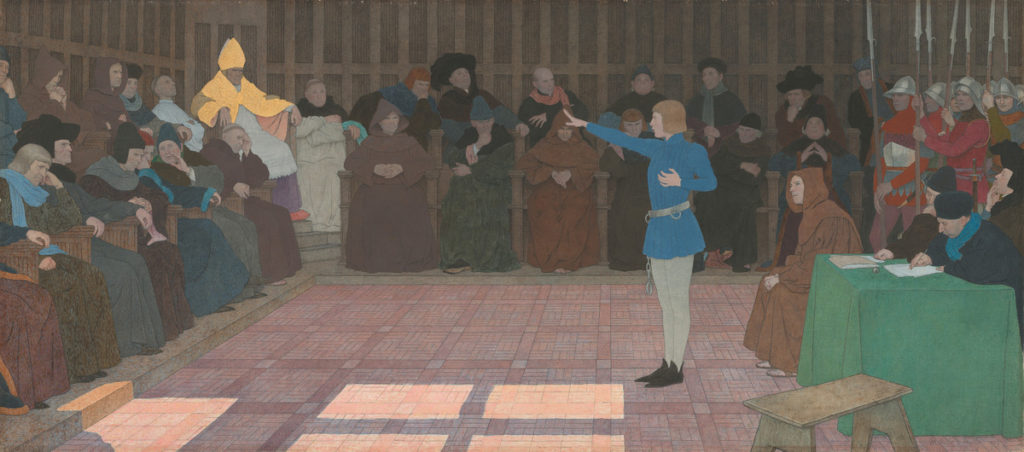
She was burned at the stake before a taunting crowd on May 30, 1431. Her body was displayed, then burned again, her ashes thrown into the Seine.
St. Joan, a heroine for all ages. A humble peasant girl who answered a religious call, rose to challenge the authorities of her world and held to her values and her faith.
— Shemaiah Gonzalez, Catholic News Service. Gonzalez is a freelance writer. Her website is shemaiahgonzalez.com.





